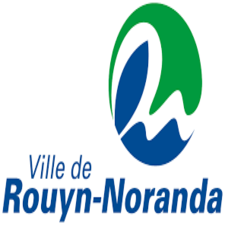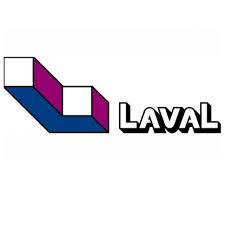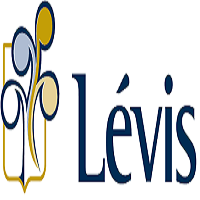Humid environment
Type of resources
Topics
Keywords
Contact for the resource
Provided by
Formats
Representation types
Update frequencies
status
-

These data are an extract from the regional plan for wetlands and bodies of water for the agglomeration of Montreal (in the process of being adopted). They illustrate the wetlands and their 30-meter protected areas that are targeted by interim control measures, i.e. the map data in Appendix A - Interim Control: wetlands to be protected or restored. (Interim control resolution relating to the protection of wetlands (CG23 0753) and interim control regulation relating to the protection of wetlands (RCG 24-008)). It is possible to visualize the data on the [interactive map] (https://smvt.maps.arcgis.com/apps/webappviewer/index.html?id=637aeb612e4c48eda895ab8e58505765) associated with the interim controls regulation. **This third party metadata element was translated using an automated translation tool (Amazon Translate).**
-

Set of wetlands in the City of Rouyn-Noranda **This third party metadata element was translated using an automated translation tool (Amazon Translate).**
-

Mapping of wetlands of interest (MHI) presumed to be identified in the urban planning code (CDU) on the territory of Laval. MHI DATA SHOULD BE CONSULTED WITH THE AREAS OF INFLUENCE. **This third party metadata element was translated using an automated translation tool (Amazon Translate).**
-

Mapping of the areas of influence of wetlands of interest (MHI) presumed to be identified in the urban planning code (CDU) on the territory of Laval. AREA OF INFLUENCE DATA SHOULD BE CONSULTED WITH THE MHIS.**This third party metadata element was translated using an automated translation tool (Amazon Translate).**
-

This data set contains the polygons delimiting the wetlands of the Montreal agglomeration. These were updated as part of the development of the [Regional Plan for Humid and Hydric Environments (PRMHH)] (https://montreal.ca/articles/un-plan-pour-proteger-les-milieux-humides-et-hydriques-67104) for the agglomeration of Montreal. They illustrate the wetlands, the type of environment and the conservation choices that have been assigned to them to meet the objectives of the Regional Plan. A visualization of the data is possible on the [interactive map] (https://experience.arcgis.com/experience/87e6da34dc3348a1a5e3f1014c266242) associated with the PRMHH. **This third party metadata element was translated using an automated translation tool (Amazon Translate).**
-

Produced as part of the St. Lawrence Action Plan, the Atlas of Territories of Conservation Interest in the St. Lawrence Lowlands shows the sites where conservation needs are the most pressing. The conservation targets selected (coarse filter) are forest environments, wetlands, open environments (wastelands, perennial crops) and aquatic environments to which are added elements of the fine filter such as exceptional aquatic environments associated with the St. Lawrence corridor (e.g. spawning grounds), alvars, bird colonies, wildlife elements (e.g. nesting sites of Bank Swallows and Chimney Swift, etc.) and important floristic occurrences. Our objective is to determine the sites of interest until a representative threshold of 20% is reached. The geospatial data associated with sites of interest for conservation, the user guide, the methodological report, the metadata as well as the detailed mapping of land use in the St. Lawrence Lowlands, which was an essential basic data for producing this atlas, are available for download. Users can therefore more accurately consult the spatial distribution of sites of interest and the conservation value associated with each plot of habitat for conservation targets (forest environments, wetlands, wastelands, perennial crops, aquatic environments) using geographic information systems (e.g. ArcGIS). Users can also adapt the analysis of this data to their territorial reality and according to specific objectives specific to their interests. Since the conservation of natural environments and species in precarious situations is a shared responsibility, this Atlas will make it possible to meet the priorities of the many organizations involved in the conservation of natural environments in the St. Lawrence Lowlands.**This third party metadata element was translated using an automated translation tool (Amazon Translate).**
-

This data set contains the routes of watercourses (stream, river) and main ditches in the agglomeration of Montreal. These were updated as part of the development of the [Regional Plan for Humid and Hydric Environments (PRMHH)] (https://montreal.ca/articles/un-plan-pour-proteger-les-milieux-humides-et-hydriques-67104) for the agglomeration of Montreal. A visualization of the data is possible on the [interactive map] (https://experience.arcgis.com/experience/87e6da34dc3348a1a5e3f1014c266242) associated with the PRMHH. **This third party metadata element was translated using an automated translation tool (Amazon Translate).**
-

The 2023 mapping of potential wetlands in Quebec (CMHPQ) 2023, released by the Directorate of Ecological Knowledge (DCE), provides up-to-date information on the potential presence of wetlands for the entire province of Quebec. In particular, version 2023 contains the classification of potentially humid geographical entities according to a selected typology and the assignment of a level of confidence associated with each entity and integrates new data sources. This mapping is an aggregation of different databases produced for other purposes and at different scales. The result of this assembly depends on the precision and accuracy of each of the data sources used. These data must be used while remaining vigilant with regard to their potential and limitations.**This third party metadata element was translated using an automated translation tool (Amazon Translate).**
-

The theme of land use offers a complete vision of the various uses of Quebec territory. It is the result of the assembly of various geographic data respecting use and distribution agreements. This product combines information on agricultural, forest, humid, humid, aquatic, anthropogenic environments, as well as on forest cuts and bare soils. This theme is based on data sources such as the ecoforest inventory of southern Quebec, agricultural databases and ecological maps. The accuracy of the product depends on the accuracy of the source layers. To access the files, which are hosted on an FTP server, it is recommended to use FileZilla (https://filezilla-project.org/) or Internet Explorer. **This third party metadata element was translated using an automated translation tool (Amazon Translate).**
-

Territory where the interim control by-law relating to the conservation of natural environments (RV3535) applies to the City of Lévis. **This third party metadata element was translated using an automated translation tool (Amazon Translate).**
 Arctic SDI catalogue
Arctic SDI catalogue